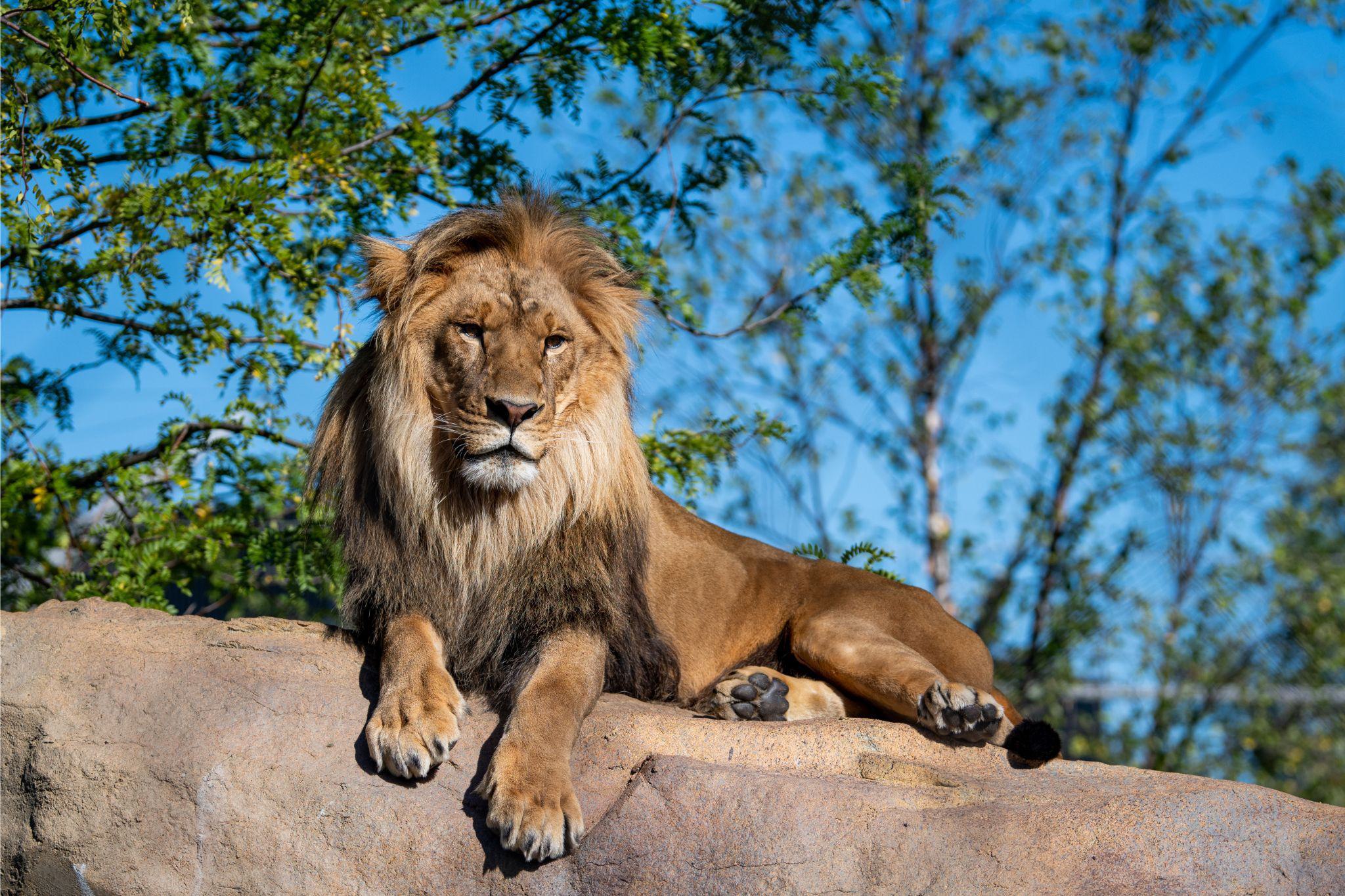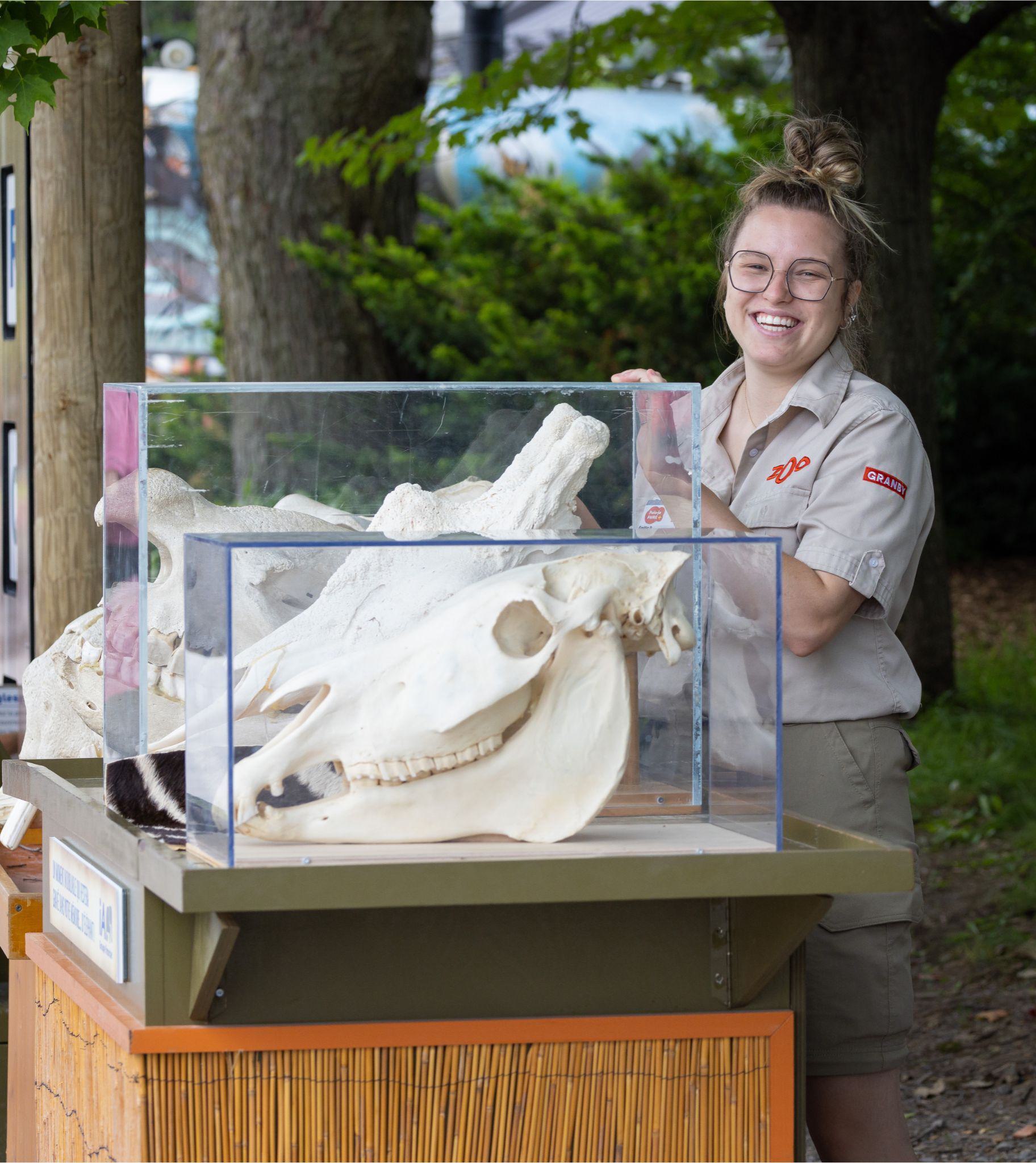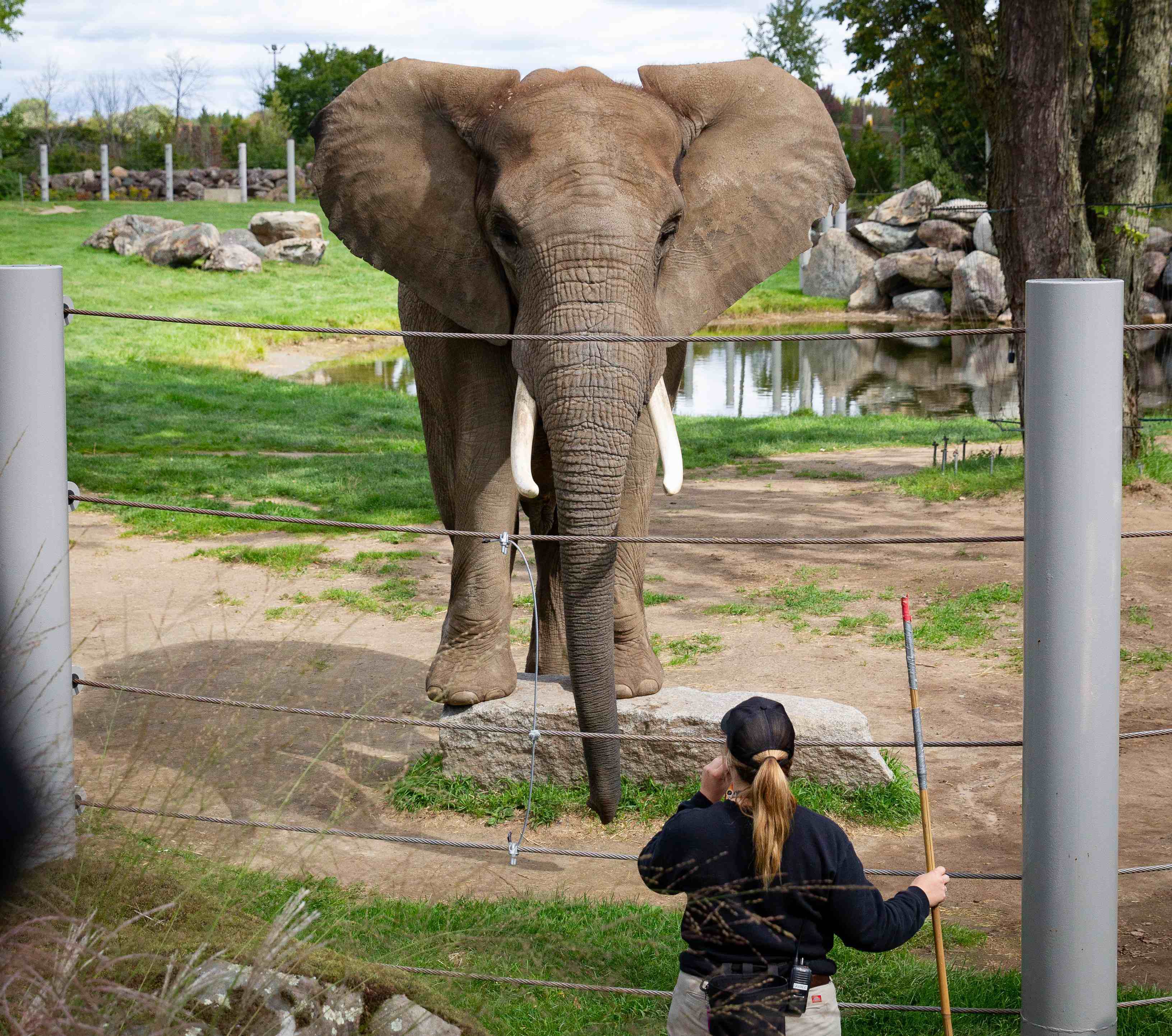The Stork Has Paid a Visit to Our Mandrills!
While our teams were putting the finishing touches to our mandrills’ new outdoor habitat, a wonderful surprise awaited the technicians in the Zoo’s Afrika sector on the morning of May 23. Indeed, our 12-year-old female Akili had given birth to an adorable little offspring. This is Akili’s third maternity experience.
The new mom takes such jealous care of her infant, keeping it so close to her that we still can’t tell its sex!
While this is a happy event at the Zoo, it’s extraordinary news for the species, classified as vulnerable in the wild. Here’s why.
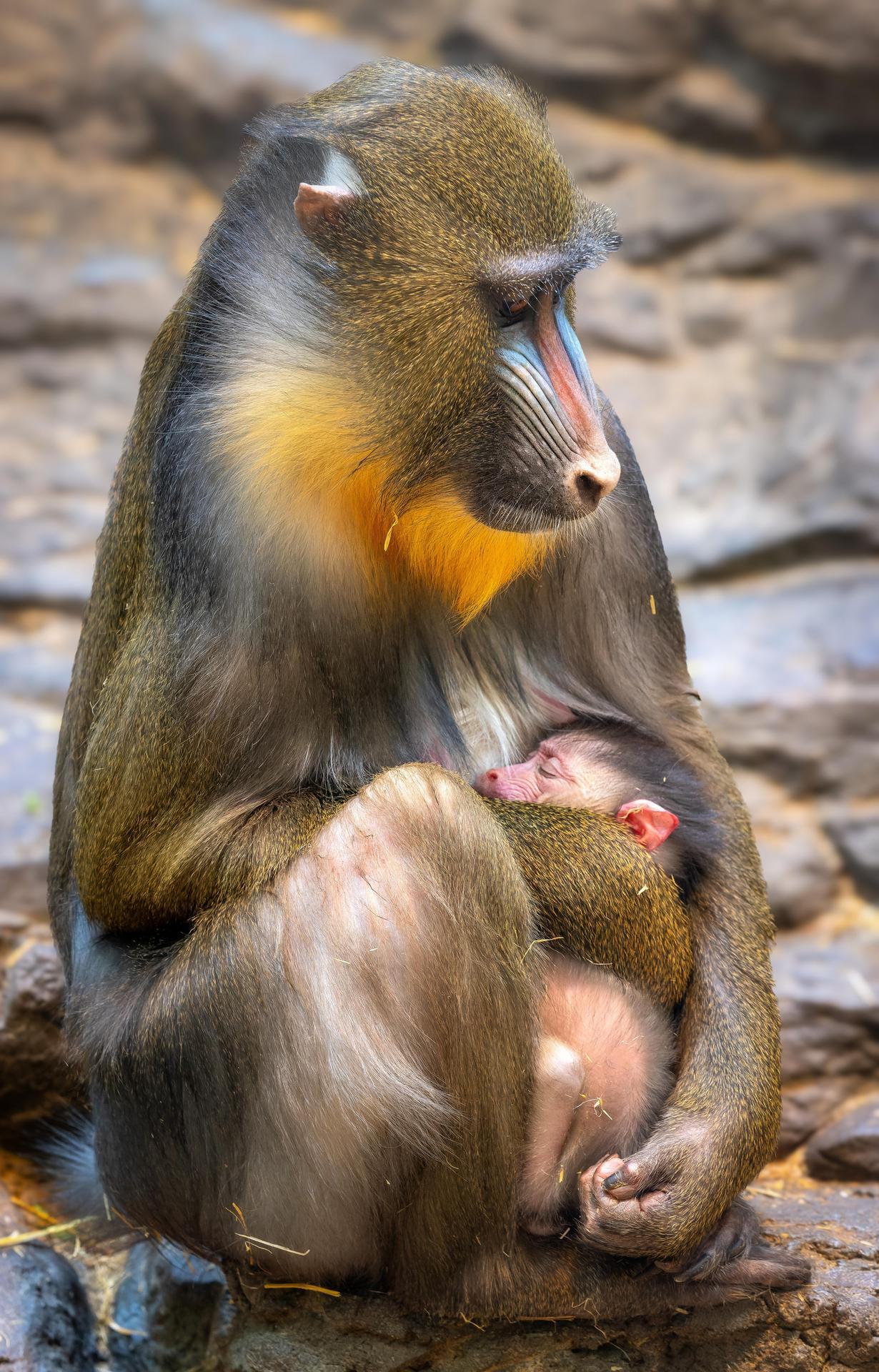
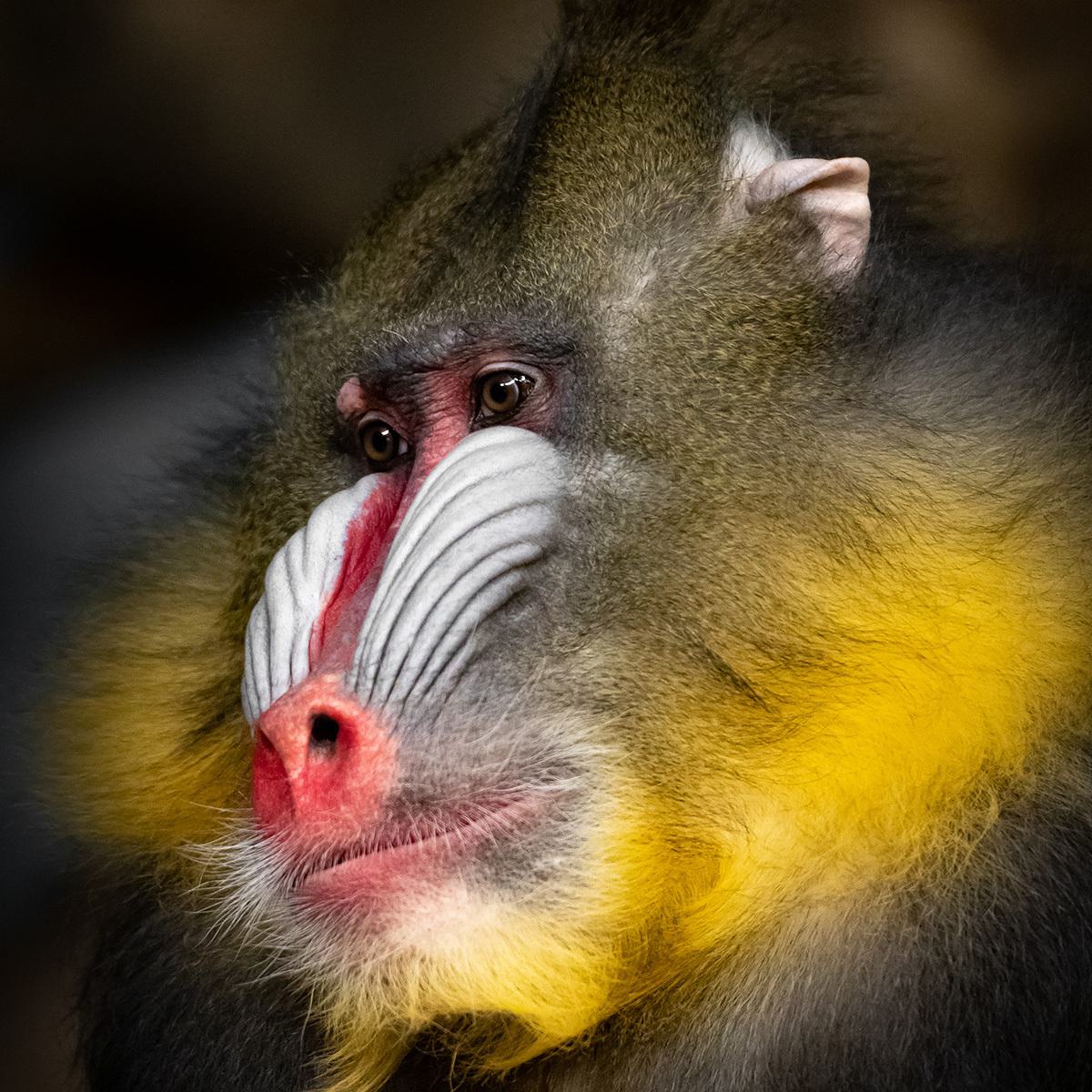
About Mandrills
Mandrills are these amazing primates found in Africa’s equatorial forest. Their vivid colouring, particularly in males, truly sets them apart; the bridge of their nose is cobalt blue, their lips and nose are bright red, a crown of golden-yellow hair encircles their face and their hindquarters are reddish purple! Mandrills are said to be the world’s most colourful mammals. They live in small social units but are often joined by other small groups to form larger cohorts. These “hordes” are generally made up of a single adult male, females and their young. Females usually give birth to one infant at a time.
At the Zoo, our group of mandrills is made up of four females led by the splendid Tumbili, an almost 20-year-old breeding male! With this latest addition, the clan now has six members and is expressing a lot of excitement.
Yes, the arrival of this little one creates a certain amount of effervescence among all the adults, but the primates are also presently learning to adapt to their new habitat. In fact, it took a couple of days for some of the group’s more adventurous ones to risk stepping outside to discover the space entirely designed for them.
Exposed to new sounds, new smells and unfamiliar surroundings, the mandrills displayed a healthy amount of suspicion, dictated by their instinct and meant to protect the group from unknown perils. Once the mandrills have fully explored the space and put their scent on it, they’ll be able to take full advantage of all the initiatives invested in this new habitat intended to continually improve their well-being at the Zoo!
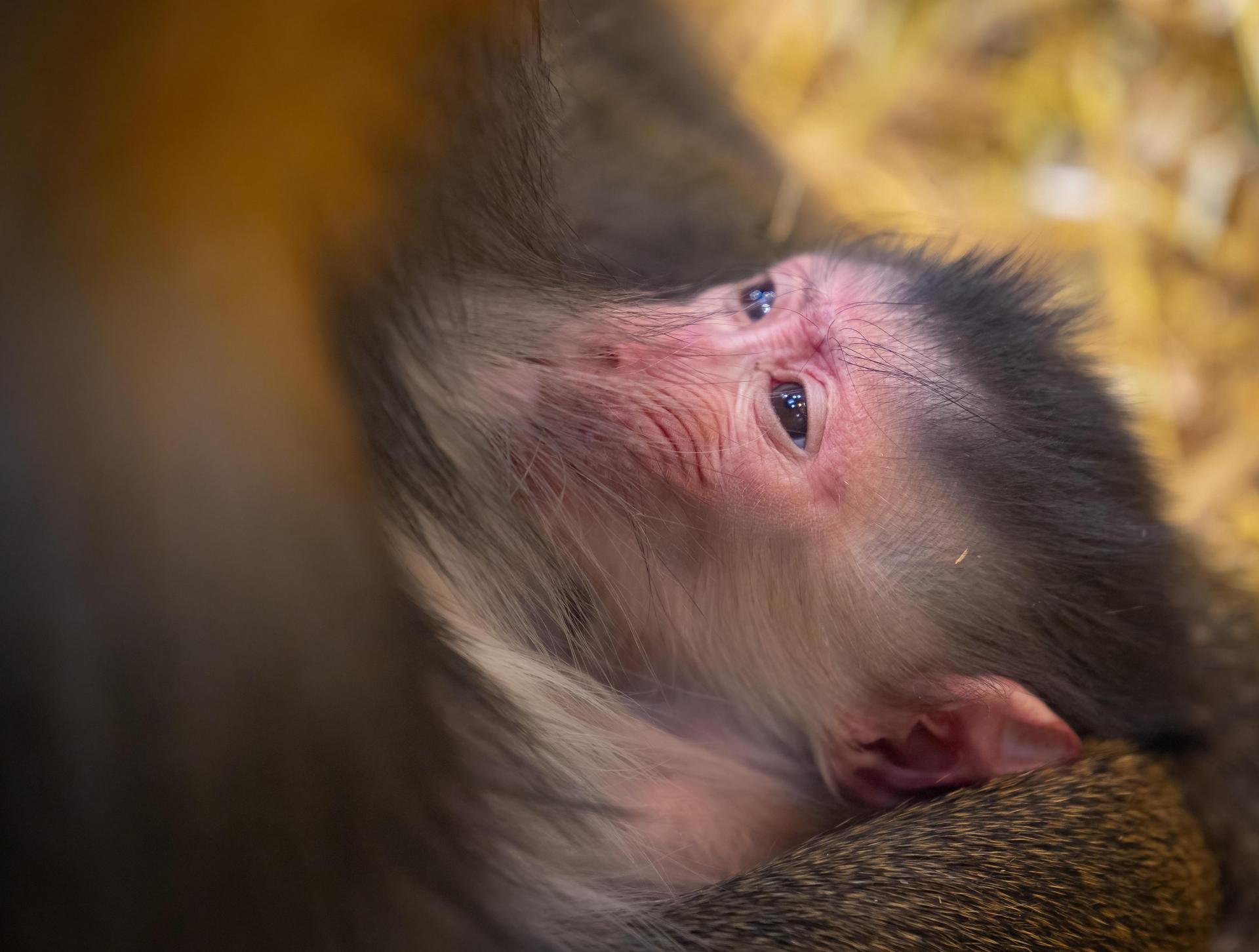
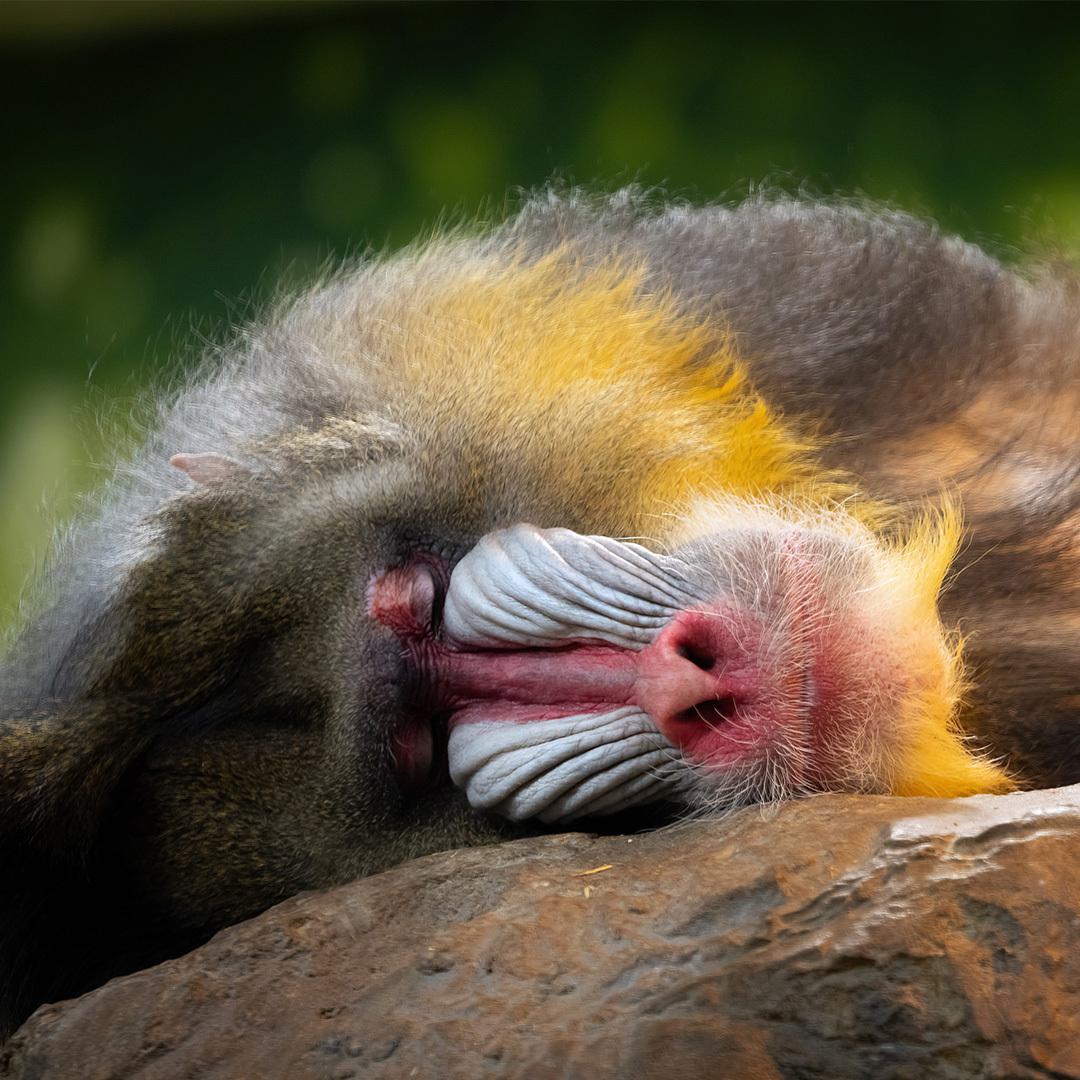
Threatened in the Wild, Preserving the Species Has Become Essential!
Mandrill populations are classed as vulnerable in the wild and subject to two main threats: the primates are trafficked for bushmeat, a market that is booming as a result of the increasing human population. In addition, these forest animals are particularly sensitive to deforestation throughout their range, which fragments their habitat and makes it difficult for them to access food sources.
The Role of Accredited Zoological Institutions
Accredited zoological institutions, such as the Zoo de Granby, contribute to the species’ conservation efforts, notably through breeding programs. Thereby, dedicated conservation professionals work to maintain healthy, genetically diverse populations to prevent their outright extinction from the face of the earth. Several species, including Przewalski’s horse and the California condor, have escaped extinction thanks to reintroduction programs in the wild driven by conservation organizations and accredited zoological institutions.
This is obviously a last resort measure, the aim being to work at an earlier stage to protect habitats and the species living there.
Granted, the current situation regarding mandrills isn’t yet considered alarming—at least not for the moment! But the decline in the number of individuals in the wild is sufficient enough to mobilize the resources needed to protect the species by any means necessary. Therefore, it’s clear that every birth, like the one recently celebrated at the Zoo de Granby, is a small victory over the risk of extinction, and excellent news for the long-term survival of the species!
